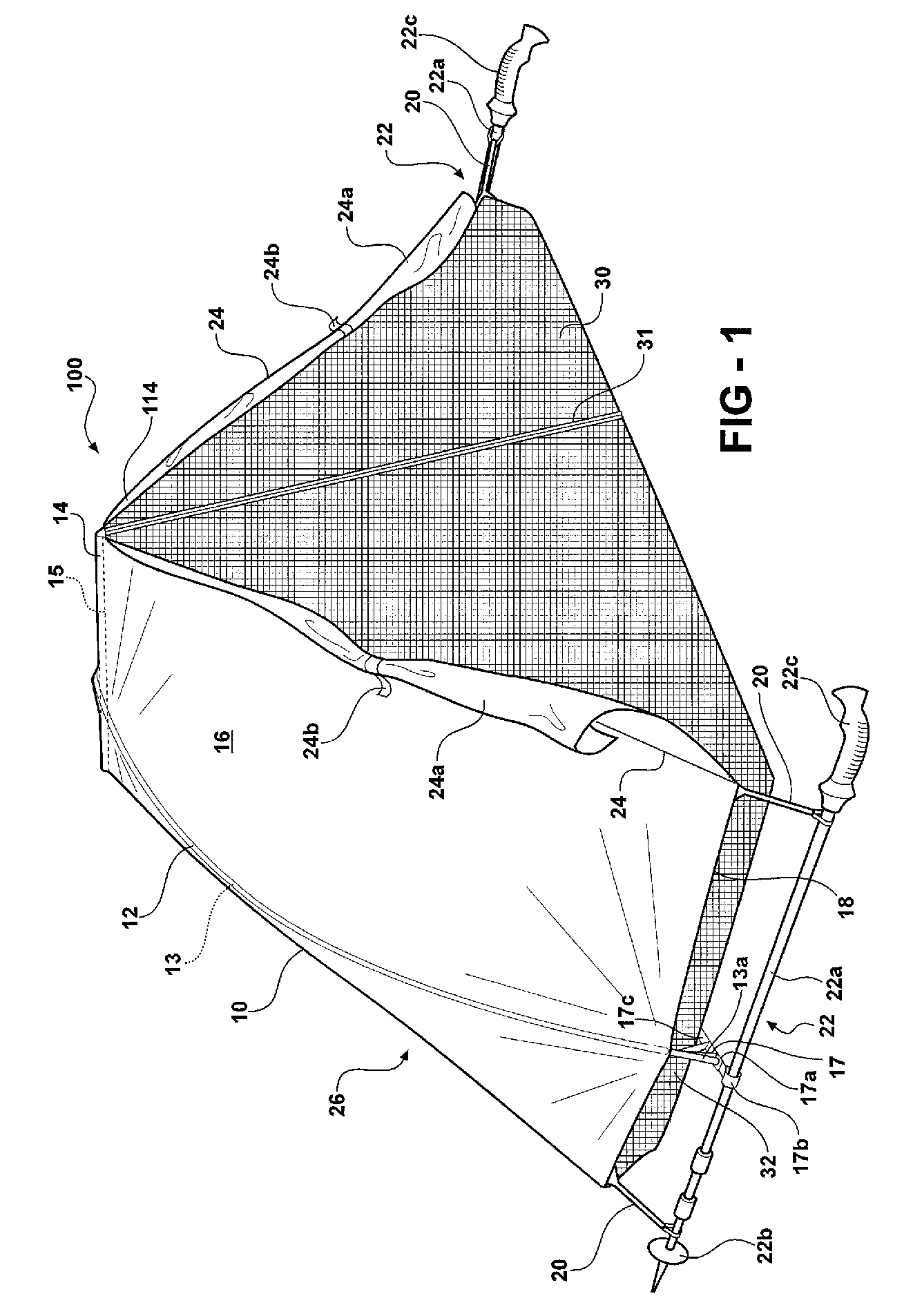Single pole freestanding shelter
a single pole and shelter technology, applied in tents/canopies, building types, constructions, etc., can solve the problems of losing the protection of the insect netting of the main tent body, the weight of the freestanding tent, etc., and achieve the effect of adding headroom and canopy tension, and light weigh
- Summary
- Abstract
- Description
- Claims
- Application Information
AI Technical Summary
Benefits of technology
Problems solved by technology
Method used
Image
Examples
Embodiment Construction
[0020]Referring first to FIG. 1, a preferred example of a shelter according to the invention is shown at 100, having a weather-resistant and preferably waterproof canopy 10. In the example of FIG. 1, canopy 10 is preferably made from silicone-coated or silicone-impregnated nylon, which is waterproof and very light, generally weighing less than two ounces per square yard. It will be understood by those skilled in the art that other known fabrics can be used depending on the expected conditions of use, including but not limited to polyurethane-coated nylon or polyester, wind or solar-resistant uncoated fabrics, or the so-called waterproof / breathable fabrics. Shelter 100 is a single-wall tent, meaning that the canopy is a single layer or sheet of fabric. While it is possible to make shelter 100 with double-wall construction (inner breathable canopy, outer waterproof rainfly spaced from the inner canopy by the arch pole structure), it would add unnecessary weight and complexity for most...
PUM
 Login to View More
Login to View More Abstract
Description
Claims
Application Information
 Login to View More
Login to View More - R&D
- Intellectual Property
- Life Sciences
- Materials
- Tech Scout
- Unparalleled Data Quality
- Higher Quality Content
- 60% Fewer Hallucinations
Browse by: Latest US Patents, China's latest patents, Technical Efficacy Thesaurus, Application Domain, Technology Topic, Popular Technical Reports.
© 2025 PatSnap. All rights reserved.Legal|Privacy policy|Modern Slavery Act Transparency Statement|Sitemap|About US| Contact US: help@patsnap.com



